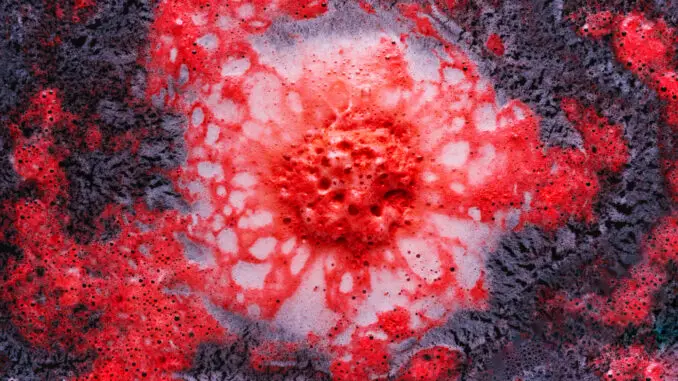
Hashimoto’s disease and gallstones are two distinct medical conditions that can affect individuals independently. However, emerging research suggests a potential association between Hashimoto’s disease, an autoimmune thyroid disorder, and an increased risk of developing gallstones. This article aims to explore both conditions, their characteristics, and the possible link between them.
Hashimoto’s Disease: An Overview
Hashimoto’s disease, also known as Hashimoto’s thyroiditis, is an autoimmune disorder characterized by the immune system attacking the thyroid gland. This autoimmune response leads to inflammation and damage to the thyroid tissue, ultimately causing hypothyroidism, a condition characterized by an underactive thyroid gland.
- Definition and Background: Hashimoto’s disease is named after Dr. Hakaru Hashimoto, who first described it in 1912. It is the most common cause of hypothyroidism in the United States, primarily affecting women.
- Autoimmune Mechanisms: In Hashimoto’s disease, the immune system mistakenly identifies the thyroid gland as a threat and produces antibodies that attack the gland. Over time, this autoimmune response leads to thyroid inflammation and impairment of its function.
- Symptoms and Diagnosis: Common symptoms of Hashimoto’s disease include fatigue, weight gain, constipation, dry skin, and sensitivity to cold. Diagnosis is typically made through blood tests measuring thyroid hormone levels and thyroid antibody levels.
- Treatment Options: Treatment for Hashimoto’s disease usually involves hormone replacement therapy to address hypothyroidism. This may include synthetic thyroid hormone medication, such as levothyroxine, to restore thyroid hormone levels in the body.
Gallstones: Understanding the Formation and Impact
Gallstones are solid particles that form in the gallbladder, a small organ located beneath the liver. They can vary in size and composition and may not always cause symptoms. However, when a gallstone blocks one of the ducts that carry bile from the gallbladder to the small intestine, it can lead to symptoms such as sudden and intense pain in the upper right abdomen, nausea, vomiting, and jaundice.
- Anatomy and Function of the Gallbladder: The gallbladder stores bile produced by the liver, releasing it into the small intestine to aid in the digestion of fats.
- Types of Gallstones: Gallstones can be cholesterol stones, which are the most common type, or pigment stones, which are less common and typically form due to excess bilirubin in the bile.
- Risk Factors for Gallstone Formation: Risk factors for developing gallstones include obesity, rapid weight loss, a high-fat diet, certain medical conditions (such as diabetes), and family history.
- Symptoms and Complications: While many gallstones are asymptomatic, they can cause complications such as inflammation of the gallbladder (cholecystitis), bile duct obstruction, and pancreatitis.
Exploring the Connection: Hashimoto’s Disease and Gallstones
Recent research has suggested a potential association between Hashimoto’s disease, particularly hypothyroidism resulting from the condition, and an increased risk of developing gallstones. While the precise mechanisms underlying this association are not fully understood, several factors may contribute to the link between these conditions.
- Research Findings: Studies have shown that individuals with hypothyroidism may have alterations in cholesterol metabolism, which could predispose them to gallstone formation.
- Hypothyroidism and Gallstone Risk: Hypothyroidism, a common consequence of Hashimoto’s disease, may lead to reduced bile flow and impaired gallbladder motility, increasing the likelihood of gallstone formation.
- Potential Mechanisms: Thyroid hormones play a crucial role in regulating cholesterol metabolism and bile acid synthesis. Disruptions in thyroid function, as seen in hypothyroidism, may disturb these processes and contribute to gallstone formation.
Clinical Implications and Considerations
Healthcare providers should be mindful of the potential association between Hashimoto’s disease and gallstones when evaluating patients presenting with symptoms suggestive of either condition. Considerations include:
- Screening and Monitoring: Individuals with Hashimoto’s disease, especially those with hypothyroidism, may benefit from screening for gallstone risk factors and periodic monitoring of gallbladder health.
- Treatment Strategies: Management of gallstones in patients with Hashimoto’s disease may involve dietary modifications, medication to dissolve stones or surgical intervention, depending on the severity of symptoms and complications.
- Patient Education: Empowering patients with information about the potential risks, symptoms, and complications of both Hashimoto’s disease and gallstones is essential for promoting proactive healthcare management and early intervention.
Future Directions and Research Opportunities
Further research is needed to elucidate the complex interplay between autoimmune thyroid disorders and gallstone formation. Areas for future investigation include:
- Mechanistic Studies: Understanding the specific pathways through which thyroid hormones influence cholesterol metabolism and gallbladder function.
- Clinical Trials: Evaluating the efficacy of thyroid hormone replacement therapy in reducing gallstone risk and improving gallbladder health in patients with Hashimoto’s disease.
- Population Studies: Investigating the prevalence of gallstone disease among individuals with autoimmune thyroid disorders across diverse populations.
Conclusion:
Hashimoto’s disease and gallstones represent distinct yet interconnected facets of human health. While the precise mechanisms linking these conditions require further exploration, emerging evidence suggests a potential association between autoimmune thyroid disorders and an increased risk of gallstone formation. Healthcare providers should remain vigilant in assessing and managing both conditions to optimize patient care and improve overall health outcomes. Through continued research and clinical collaboration, we can deepen our understanding of these complex interactions and strive to enhance the quality of care for individuals affected by Hashimoto’s disease and gallstones alike.


Excellent blog here Also your website loads up very fast What web host are you using Can I get your affiliate link to your host I wish my web site loaded up as quickly as yours lol
Thanks I have recently been looking for info about this subject for a while and yours is the greatest I have discovered so far However what in regards to the bottom line Are you certain in regards to the supply
Your point of view caught my eye and was very interesting. Thanks. I have a question for you.